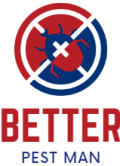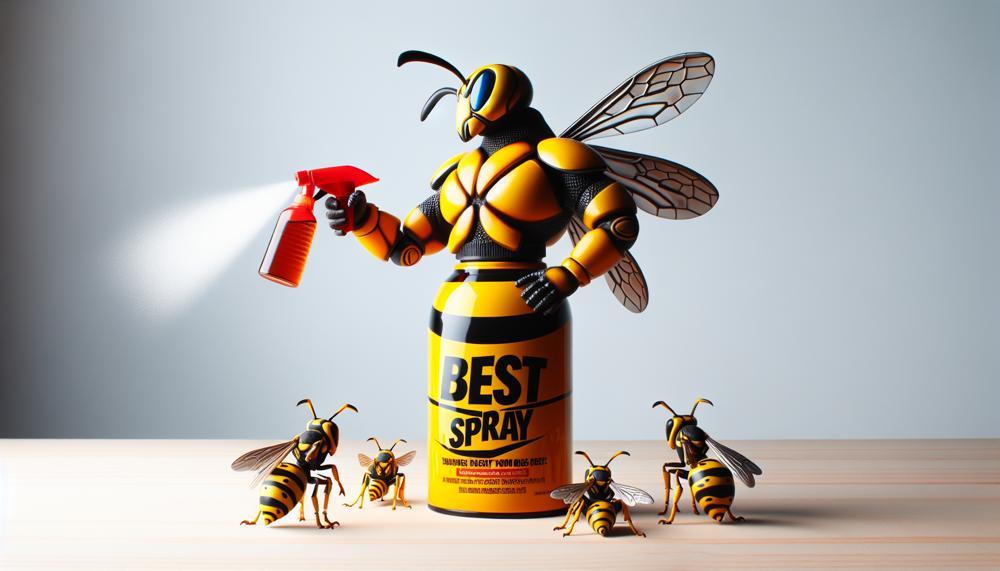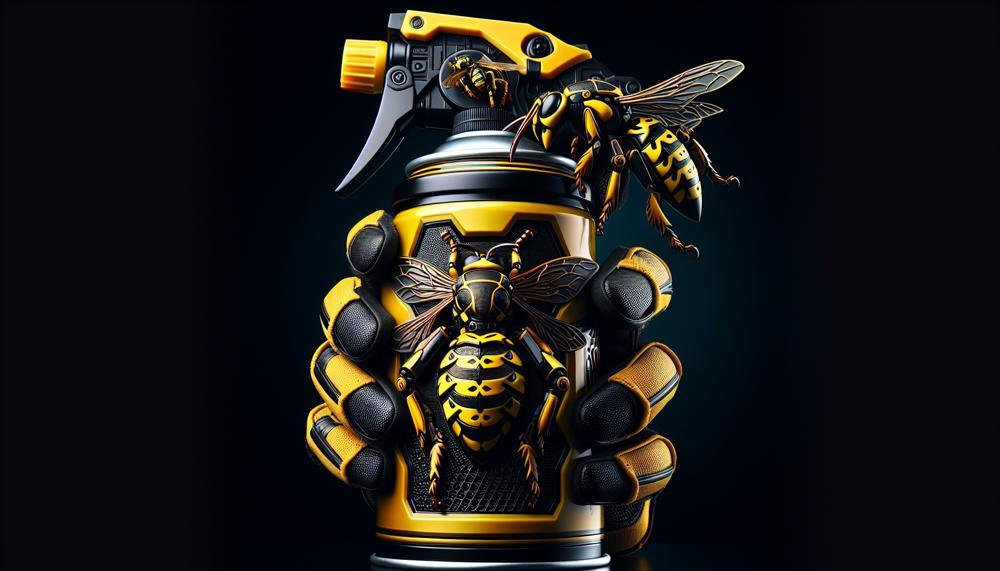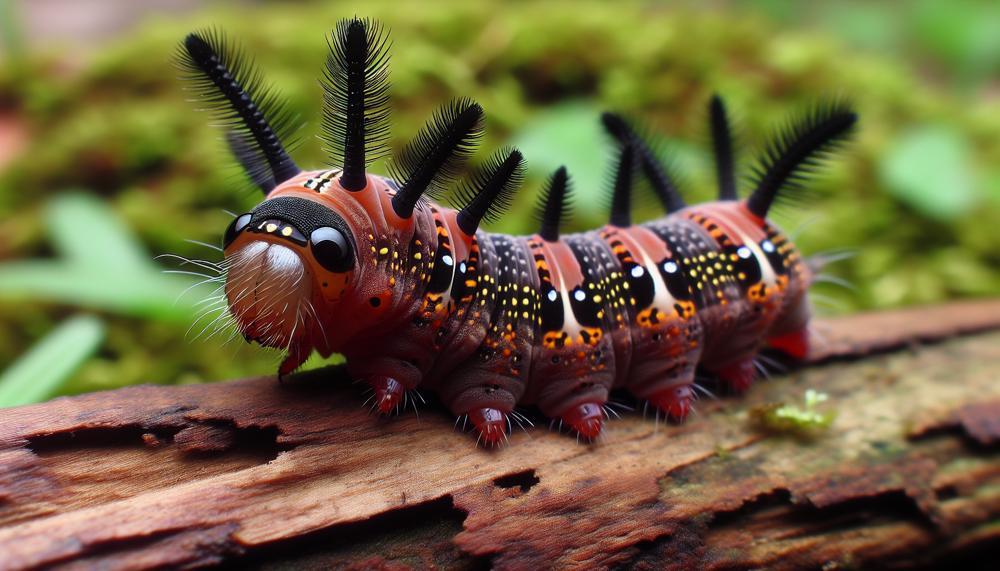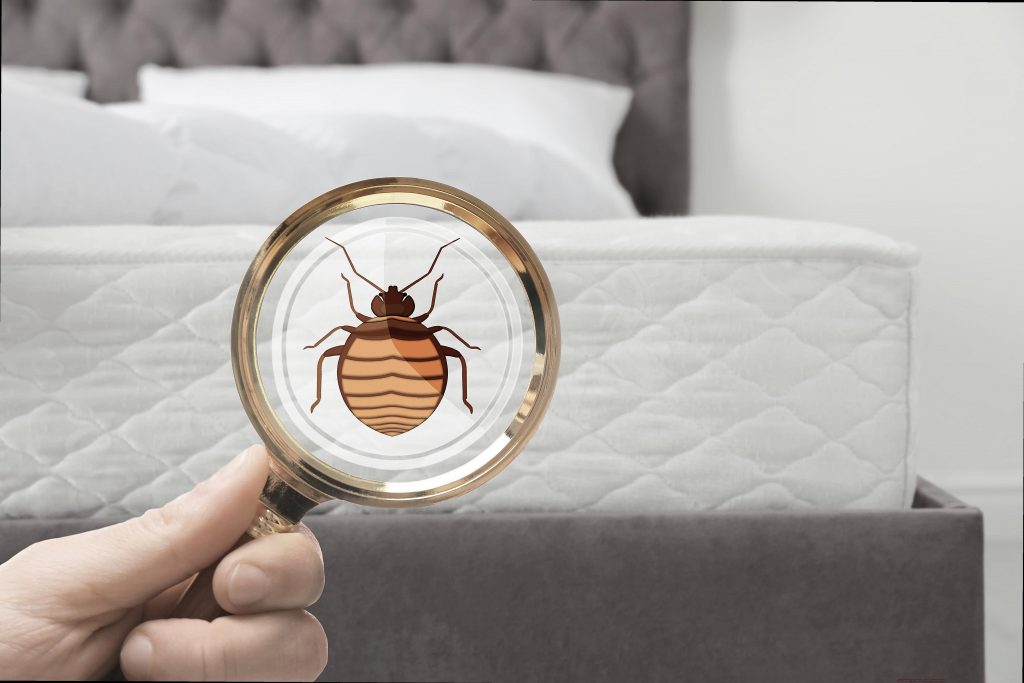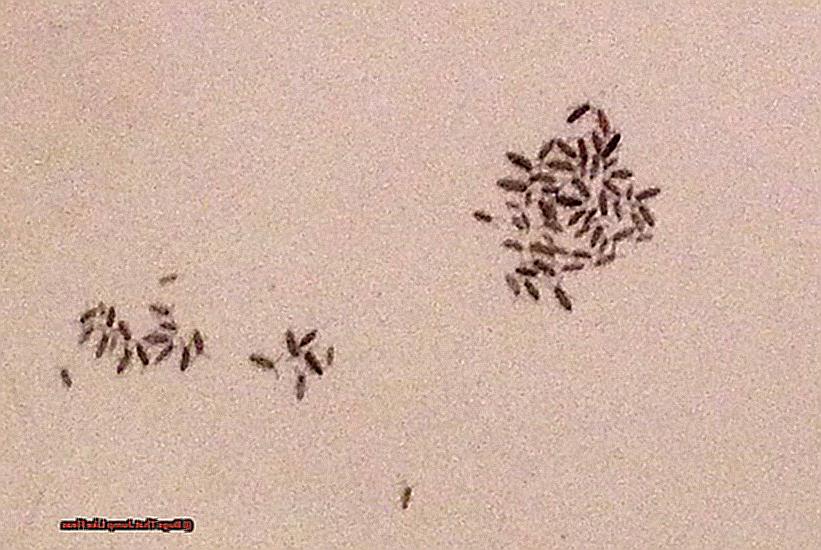Picture this: you’re enjoying a lovely picnic in the park. You soak up the warm sun and savor your favorite snacks. But suddenly, the buzzing and swarming of yellow jackets interrupt your peaceful moment. The fear of getting stung takes over, and your outdoor experience is ruined. Sound familiar? We have the ultimate solution to effectively eliminate these unwelcome guests.
No more swatting or running for cover – it’s time to take back control of your backyard. In this blog post, we will delve into everything you need to know about yellow jackets. We’ll discuss their behavior, nesting sites, natural remedies, and DIY traps. We’ll also explore professional extermination options. We’ll also look at prevention techniques to keep them from coming back.
So, keep reading as we guide you towards a yellow jacket-free summer.
Table of Contents
- 1 What Is The Best Spray To Kill Yellow Jackets?
- 2 Understanding the dangers of yellow jackets and their stings.
- 3 The importance of choosing the right spray for yellow jacket control.
- 4 Active ingredients to look for in a yellow jacket spray.
- 5 Spray patterns that are most effective against fast-flying yellow jackets.
- 6 Proper usage and safety precautions when using a yellow jacket spray.
- 7 Top recommended sprays for killing yellow jackets, including natural alternatives.
- 8 Conclusion
What Is The Best Spray To Kill Yellow Jackets?
When it comes to choosing the most effective spray to eliminate yellow jackets, there are several crucial factors to consider.
These include the spray’s success rate, safety measures, active ingredients, spray pattern, and proper usage instructions.
Effectiveness:
The spray should be specifically designed for controlling wasps and hornets and have a proven track record of successfully eliminating yellow jackets.
Look for sprays that have a long-lasting effect, meaning they continue to kill insects even after the initial application.
Safety:
It is important to choose a spray that is safe for use around humans and pets.
Make sure to carefully read the product label and follow all safety precautions when using any type of insecticide.
Active Ingredients:
The most effective sprays for killing yellow jackets will contain ingredients such as pyrethroids or pyrethrins. These natural insecticides are derived from chrysanthemum flowers.
These ingredients are highly efficient in killing yellow jackets. They quickly break down in the environment, making them less harmful to beneficial insects.
Spray Pattern:
Yellow jackets are fast flyers and can easily escape a traditional spray nozzle.
Look for sprays that have a concentrated jet or stream pattern, as these have a longer range and can reach nests that may be located high up or far away.
Instructions for Use:
Always read the instructions carefully before using any spray on yellow jackets. Some sprays may need to be used at specific times of day when the yellow jackets are less active. Others may require multiple applications.
Make sure to wear protective gear when using any type of insecticide.
Some highly recommended sprays for eliminating yellow jackets include Raid Wasp and Hornet Killer. Spectracide Wasp and Hornet Killer is also effective. Both sprays contain powerful pyrethroids and have a concentrated jet spray pattern.
For those seeking a more natural option, there are sprays available. These sprays use essential oils like peppermint or clove to repel and kill yellow jackets.
Understanding the dangers of yellow jackets and their stings.
The Dangers of Yellow Jackets and Their Stings:
- The yellow jacket’s stinger punctures the skin and triggers an inflammatory response in the body, causing pain and discomfort.
- Mild reactions include swelling, redness, itching, and discomfort at the sting site.
- More severe reactions can result in swollen tongue and chest tightness, which can block airways.
- Those with allergies may experience systemic reactions that worsen with each subsequent sting.
- Potential complications from yellow jacket stings include infection or severe allergic reactions requiring immediate medical attention.
It is crucial to effectively eliminate yellow jackets from your home as their stings can range from mild to severe, depending on individual sensitivity. Timely medical assistance is essential for those with allergies.
The Importance of Properly Removing Yellow Jackets:
- Yellow jackets are known for their aggressive nature and ability to sting multiple times, unlike honeybees.
- When provoked, they release pheromones to attract others to attack.
- Their stings can cause serious health complications and require immediate medical attention.
- Yellow jackets are attracted to sugary and protein-rich foods, making them a common pest in outdoor areas where food is present.
- Their nests can be found in or near homes, increasing the likelihood of human interaction and stings.
- Eliminating yellow jackets from your home reduces the risk of encountering them and getting stung.
Effective Methods for Removal:
- It is recommended to seek professional pest control services to safely remove yellow jacket nests from your home.
- For DIY removal, make sure to wear protective clothing and approach the nest with caution.
- Use a proven, effective spray specifically designed for yellow jackets, following the instructions carefully.
- Avoid using sprays with harmful chemicals that could pose risks to your health and the environment.
- Consider natural alternatives, such as essential oils, which can be just as effective without harmful side effects.
The importance of choosing the right spray for yellow jacket control.
Choosing the appropriate spray is vital in effectively eradicating yellow jackets. Using the wrong spray not only wastes time and money, but also increases the chances of getting stung. Therefore, it is crucial to consider various factors when choosing the ideal spray for controlling yellow jackets. This includes the type of yellow jacket infesting your property, active ingredients in the spray, usage instructions, and safety precautions.
To ensure successful yellow jacket control, you must understand the different types of yellow jackets and their behaviors. For instance, European yellow jackets are aggressive. They tend to build their nests in underground burrows. In contrast, German yellow jackets are more docile. They prefer to nest in trees or shrubs.
Identifying the type of yellow jacket on your property will help you choose the best spray to get rid of it.
Moreover, it is essential to carefully read the active ingredients listed on the spray’s label. Some sprays may contain chemicals that are harmful to certain plant species. They may also harm other beneficial insects like bees.
In such cases, it is best to opt for natural sprays. Or, consult a professional for advice on safe and effective options.
Active ingredients to look for in a yellow jacket spray.
When searching for a spray specifically designed to eradicate yellow jackets, it is crucial to look for active ingredients that have been proven to be highly effective in eliminating these aggressive pests.
The ingredients are soap, peppermint oil, red wine, dish soap, and laundry detergent. These are commonly found in sprays designed for this purpose.
| Active Ingredient | Effectiveness | Usage Instructions |
| Soap | Highly effective | Directly spray onto the yellow jackets or their nest. Repeat as necessary. |
| Peppermint Oil | Highly effective | Mix with water and spray directly onto the yellow jackets or their nest. Repeat as necessary. |
| Red Wine | Highly effective | Mix with water and spray directly onto the yellow jackets or their nest. Repeat as necessary. |
| Dish Soap | Highly effective | Mix with water and spray directly onto the yellow jackets or their nest. Repeat as necessary. |
| Laundry Detergent | Highly effective | Mix with water and spray directly onto the yellow jackets or their nest. Repeat as necessary. |
These active ingredients work by suffocating the yellow jackets. They also disrupt their nervous system or clog their breathing pores.
To ensure maximum effectiveness, carefully follow the usage instructions. Take necessary safety precautions when using sprays containing these ingredients.
Aside from the active ingredients, it is also important to consider the type of yellow jacket you are dealing with. For instance, German yellow jackets are more attracted to sweet scents. Bald-faced hornets are more drawn to protein-based baits.
Knowing the behavior and habits of the specific type of yellow jacket will aid in choosing the most suitable spray.
In cases of large infestations or if you have allergies to yellow jacket stings, it is advisable to seek help from a professional exterminator.
They possess the necessary equipment and expertise to safely and effectively eliminate these pests from your property.
Spray patterns that are most effective against fast-flying yellow jackets.
There are several spray techniques that can effectively exterminate fast-flying yellow jackets. These include:
- Direct Spray: This method involves applying insecticide directly onto the yellow jackets, targeting their bodies and wings. It is a quick and straightforward way to eliminate them, but it requires getting close to the nest and can be dangerous if the wasps become agitated.
- Mist Spray: Mist sprays produce a fine mist that can cover a larger area and penetrate into crevices where yellow jackets may be hiding. It is important to thoroughly saturate the nest area for maximum effectiveness.
- Foam Spray: Foam sprays are designed to adhere to surfaces, making them ideal for tackling nests in hard-to-reach areas like under eaves or in cracks and crevices. The foam also provides a longer-lasting barrier against future yellow jacket activity.
- Jet Spray: Jet sprays emit a narrow stream that can reach up to 20 feet, making them useful for targeting nests in high or hard-to-reach areas. However, they may not provide as comprehensive coverage as other spray patterns.
- Combination Spray: Some insecticides come in a combination spray that offers both foam and mist options. This allows for flexibility in targeting different areas of a nest and can provide more thorough coverage.
| Technique | Description | Advantages | Disadvantages |
| Direct Spray | Applying insecticide directly onto yellow jackets | Quick and straightforward | Dangerous if wasps become agitated |
| Mist Spray | Produces a fine mist that covers a larger area | Can reach into crevices where yellow jackets may hide | May not saturate the area sufficiently |
| Foam Spray | Adheres to surfaces, ideal for nests in hard-to-reach areas | Offers a longer-lasting barrier | May not cover as large of an area |
| Jet Spray | Narrow stream can reach up to 20 feet | Useful for targeting nests in high or hard-to-reach areas | May not provide comprehensive coverage |
| Combination Spray | Includes both foam and mist options for flexibility | Can provide more thorough coverage | N/A |
Proper usage and safety precautions when using a yellow jacket spray.
If you are dealing with yellow jackets in your home, it is crucial to take the necessary precautions for your safety and successfully eliminate them. Here are some helpful tips when using a yellow jacket spray:
- Choose the right spray: When selecting a yellow jacket spray, make sure to choose one that is specifically designed to target these insects. Avoid using general insect sprays as they may not be effective and can potentially harm you or your household.
- Read the instructions: Before using the spray, carefully read and follow the instructions provided on the label. This will ensure that you are using the product correctly and safely.
- Wear protective gear: To protect yourself from potential stings, wear long-sleeved clothing, gloves, and a face mask when using a spray to deal with yellow jackets.
- Choose the right time: The best time to use a yellow jacket spray is at night when these insects are less active and in their nests. Doing so will increase your chances of effectively eliminating them.
- Keep children and pets away: Make sure to keep children and pets away from the area where you will be spraying. It is also best to keep them indoors while using the spray.
- Use proper technique: Different sprays may have different application techniques. Make sure to use the correct technique according to the product’s instructions for optimal results.
- Proper disposal: After using the spray, make sure to dispose of the empty container properly. Do not leave it lying around as it can harm other animals or individuals if not disposed of correctly.
- Consider professional help: If you have a large infestation of yellow jackets or are allergic to their sting, it is best to seek professional help from an exterminator for safe and effective removal.
- Follow up treatments: In some cases, multiple treatments may be necessary to completely get rid of yellow jackets. Follow up with additional treatments as needed, based on the instructions provided by the product.
- Safety first: Always prioritize your safety when using any type of insecticide. If you experience any adverse reactions, seek medical attention immediately.
Top recommended sprays for killing yellow jackets, including natural alternatives.
There are various highly recommended sprays available to get rid of yellow jackets. These include pyrethrin-based sprays and Delta Dust Insecticide. There are also natural alternatives like peppermint oil and vinegar-based sprays.
These sprays work by targeting the yellow jackets’ nervous system, ultimately leading to their demise. It’s crucial to carefully follow the instructions on the label. Take all necessary safety precautions when using these sprays.
For those who prefer natural options, peppermint oil-based and vinegar-based sprays have been proven to be effective. They repel and kill yellow jackets.
However, if the infestation is severe or if you’re unsure about using these sprays on your own, it’s always best to seek professional help.
Conclusion
In conclusion, it’s safe to say that yellow jackets are no picnic when it comes to outdoor activities. They can quickly turn a peaceful gathering into a nightmare with their aggressive nature and painful stings. We have provided you with expert tips and advice on the best spray to effectively eliminate these unwelcome guests.
Understanding the behavior and nesting sites of yellow jackets is crucial. It helps in successfully controlling them. From there, choosing the right spray becomes easier. When making a selection, carefully consider factors such as effectiveness, safety measures, active ingredients, spray pattern, and usage instructions.
We recommend choosing sprays with proven success rates. Choose natural ingredients like pyrethroids or essential oils. They are safe for use around humans and pets.
Don’t let pesky yellow jackets ruin your outdoor gatherings. Take back control of your backyard with our tried and tested methods. And if DIY removal is not an option for you, don’t hesitate to seek help from a professional exterminator.
With our expert tips at hand, you can enjoy a stress-free summer. No more buzzing and swarming of yellow jackets.
